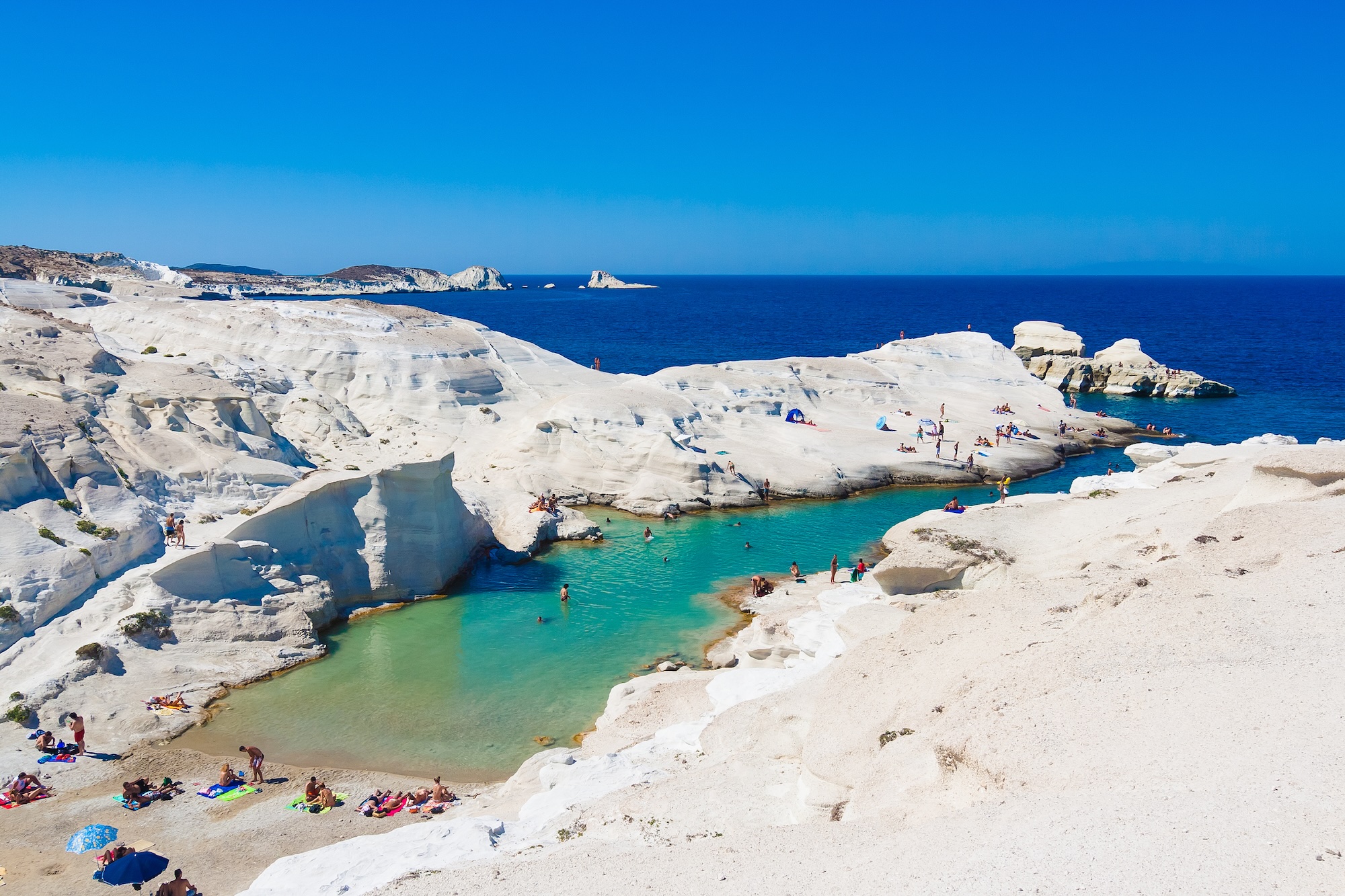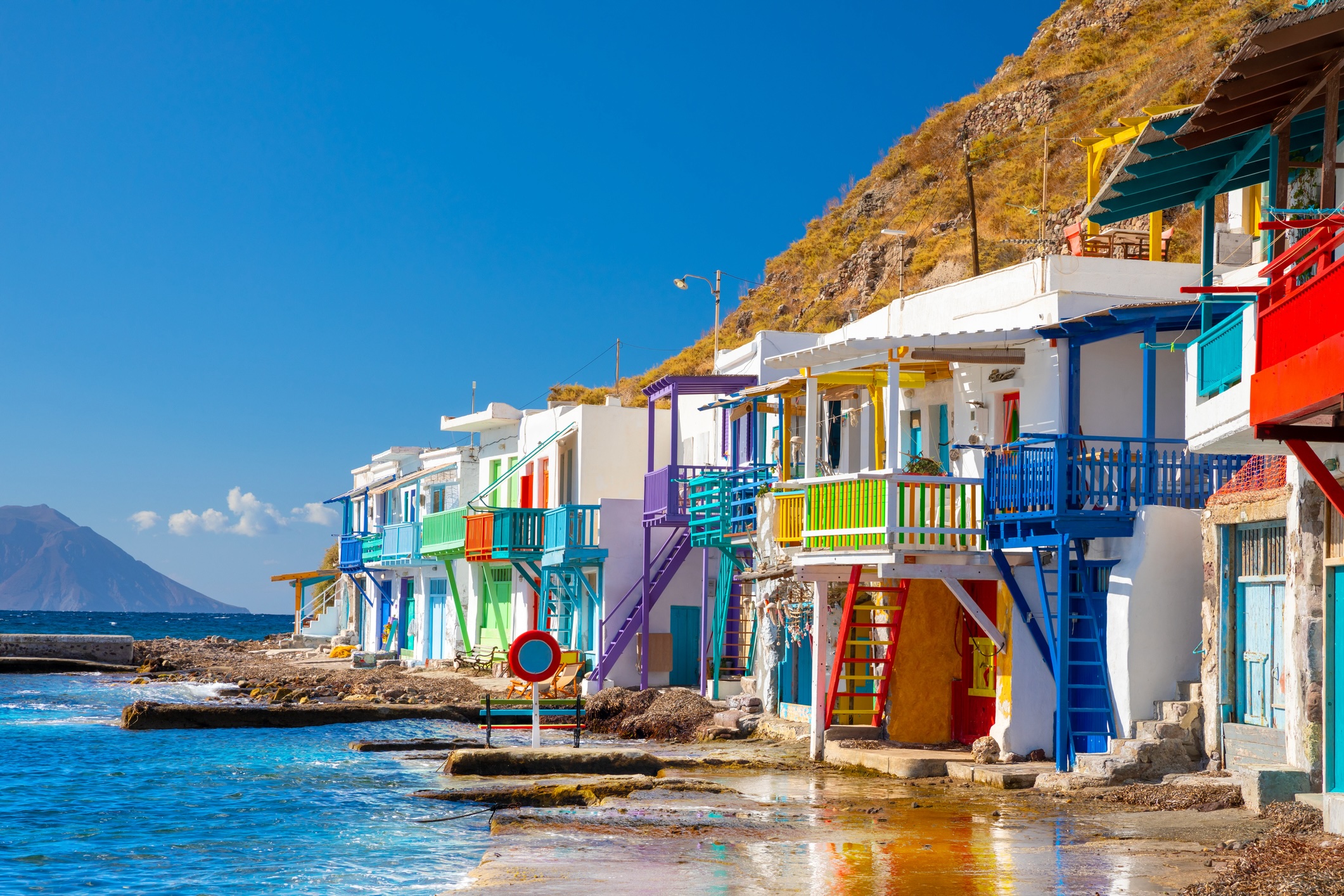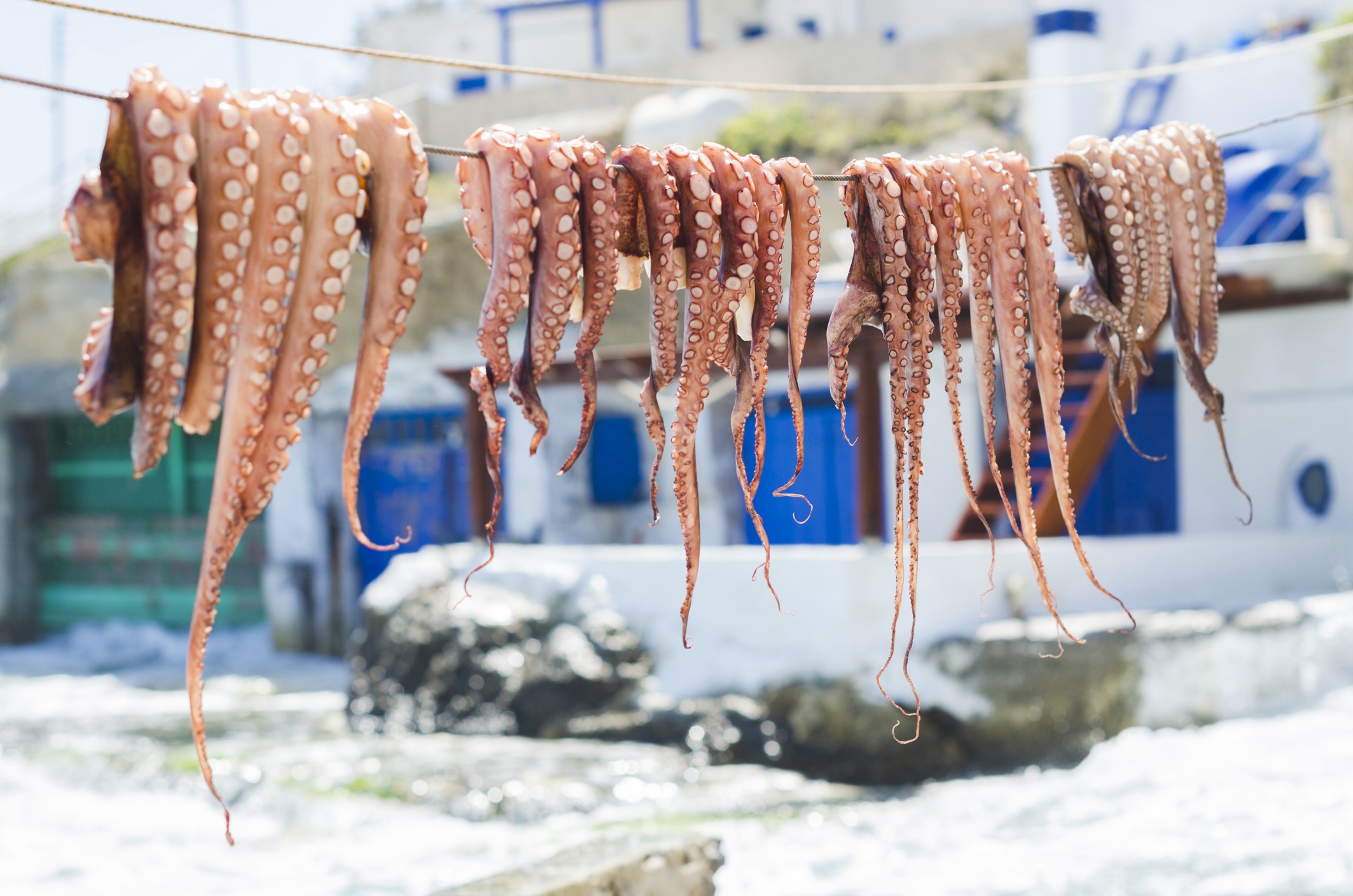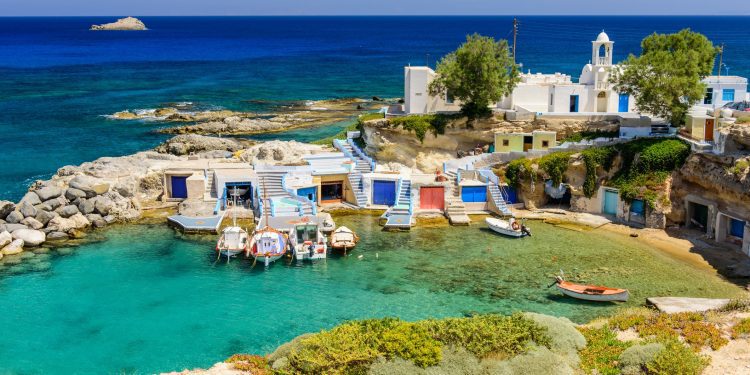Milos, a gem of the Cyclades, is one of Greece’s most captivating islands. Known for its vibrant and colorful beaches, stunning geological formations, and rich history, Milos offers a unique blend of natural beauty and cultural heritage. While it may not be as famous as neighboring Santorini or Mykonos, Milos is a treasure waiting to be discovered, particularly by those who appreciate striking landscapes and off-the-beaten-path destinations. Here’s an in-depth look at what makes Milos so special and why it should be at the top of your travel list.

1. The Multicolored Beaches of Milos
Milos is often referred to as the “Island of Colors,” and for good reason. The island’s volcanic origin has endowed it with an array of stunning beaches, each with its unique color palette and geological features. Here are a few of the must-visit beaches:
- Sarakiniko: Perhaps the most iconic of all, Sarakiniko is famous for its lunar-like landscape. The bright white volcanic rock formations, carved by the wind and sea, create a stark contrast against the deep blue waters of the Aegean. It’s a photographer’s dream and a perfect spot for swimming, sunbathing, or simply marveling at the otherworldly scenery.
- Tsigrado: A hidden gem, Tsigrado is a small, secluded beach surrounded by towering cliffs. Accessible via a somewhat adventurous descent down a rope ladder, this beach rewards the daring with its soft sand and crystal-clear waters. The dramatic landscape and the sense of discovery make it one of Milos’s most unforgettable spots.
- Firiplaka: This beach is known for its long stretch of golden sand and the colorful cliffs that rise behind it. The cliffs, streaked with shades of red, pink, and yellow, add to the vibrant atmosphere of Firiplaka. The shallow waters make it an ideal beach for families and those looking to relax.
- Papafragas: This unique beach is more of a sea cave than a traditional beach, with a narrow strip of sand nestled between towering rock walls. The turquoise water is calm and inviting, and swimming through the natural archways and caves is an exhilarating experience.

2. The Unique Geological Formations
Milos’s volcanic past has left the island with an array of fascinating geological formations, making it a paradise for geology enthusiasts and nature lovers alike. The island’s rugged coastline is dotted with sea caves, rock arches, and bizarrely shaped cliffs, all sculpted by volcanic activity and erosion over millennia.
- Kleftiko: Known as the “Pirates’ Lair,” Kleftiko is a series of towering white cliffs and sea caves accessible only by boat. The area was once a hideout for pirates, and today, it’s a popular spot for boat tours, snorkeling, and diving. The waters here are incredibly clear, offering a window into the vibrant marine life below.
- The Catacombs of Milos: While not a natural formation, the Catacombs of Milos are a significant historical and geological site. These ancient Christian burial chambers, carved into the volcanic rock, date back to the 1st to 5th centuries AD. They are considered among the most important early Christian monuments in Greece.

3. Exploring the Villages of Milos
Beyond its beaches and geological wonders, Milos is also home to charming villages that offer a glimpse into the island’s culture and history.
- Plaka: The island’s capital, Plaka, is a quintessential Cycladic village with narrow cobblestone streets, whitewashed houses, and vibrant bougainvillea. Perched on a hill, Plaka offers stunning panoramic views, especially at sunset. The village is also home to several small museums, including the Archaeological Museum of Milos, which houses the famous statue of Aphrodite of Milos (Venus de Milo).
- Klima: One of the most picturesque villages on the island, Klima is known for its colorful “syrmata” houses, which were once used by fishermen to store their boats. These brightly painted houses, with their doors opening directly onto the sea, are a beautiful example of traditional Cycladic architecture. Strolling along the waterfront in Klima is like stepping back in time.
- Pollonia: Located on the northeastern tip of Milos, Pollonia is a charming fishing village with a laid-back vibe. It’s a great place to enjoy fresh seafood at a seaside taverna or take a boat trip to the nearby island of Kimolos. Pollonia’s sandy beach and crystal-clear waters make it a perfect spot for swimming and relaxation.

4. Discovering Milos’s Rich History
Milos’s history dates back thousands of years, and the island has played a significant role in ancient Greek civilization. The island’s rich history is reflected in its archaeological sites and museums.
- Ancient Theater of Milos: Overlooking the bay of Klima, the ancient theater of Milos dates back to the Hellenistic period. The well-preserved marble seats and the theater’s stunning location make it a fascinating site to visit. The theater was once the center of cultural life on the island and is still occasionally used for performances today.
- Venus de Milo: Although the famous statue of Venus de Milo now resides in the Louvre, its discovery site is on Milos. Visitors can explore the site where the statue was unearthed in 1820, near the ancient theater, and visit the Archaeological Museum to learn more about this iconic work of art.

5. Experiencing Milos’s Culinary Delights
No visit to Milos would be complete without indulging in the island’s culinary offerings. Milos is known for its fresh seafood, traditional Greek dishes, and local specialties.
- Seafood: Given its coastal location, it’s no surprise that seafood is a highlight of Milos’s cuisine. From grilled octopus to fresh fish and seafood pasta, the island’s tavernas serve up an array of delicious, ocean-fresh dishes.
- Pitarakia: A local specialty, pitarakia are small cheese pies made with a dough of flour and olive oil and filled with local cheese. These savory snacks are often served as part of a meze spread or enjoyed as a quick bite.
- Koufeto: A traditional sweet treat from Milos, koufeto is made with honey, almonds, and local sweets like spoon sweets made from fruits like quince or watermelon. It’s often served at weddings and other celebrations, symbolizing the sweetness of life.
Conclusion: A Journey of Discovery on Milos
Milos is an island that captivates the senses, with its kaleidoscope of colors, unique landscapes, and rich history. Whether you’re lounging on one of its stunning beaches, exploring its ancient sites, or wandering through its picturesque villages, Milos offers a truly unique Greek island experience. It’s a destination where nature, history, and culture come together, creating a magical atmosphere that leaves a lasting impression on all who visit. So if you’re looking for a Greek island adventure that goes beyond the ordinary, Milos should be at the top of your list.











